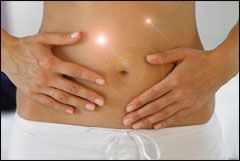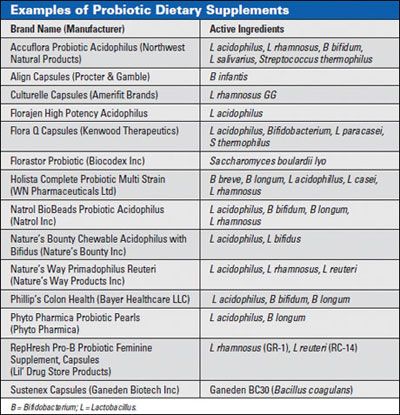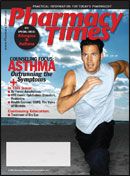Publication
Article
Pharmacy Times
Probiotic Supplements: The "Good" Bugs
Author(s):
Research is providing encouraging evidence about the use of probiotics for various conditions, including allergic rhinitis.
Ms. Terrie is a clinical pharmacy writer based in Haymarket, Virginia.

Probiotic supplements have gainedpopularity over the past few years andare often used to promote, improve,and maintain digestion. They also havebeen used to prevent or decrease therecurrence of vaginal yeast infectionsand treat conditions that may changenormal intestinal flora (eg, antibiotic-associated,traveler's, and infectiousdiarrhea) and inflammatory and functionalbowel conditions.1 A number ofclinical studies have investigated therole of probiotics in treating variousallergic conditions as well.
The World Health Organization andthe Food and Agriculture Organizationof the United Nations define probioticsas "live microorganisms, which,when administered in adequateamounts, confer a health benefit onthe host."1-3 Probiotics are normallypresent in the human gut or as componentsof foods, beverages, and supplements.1,3 According to the Handbookof Nonprescription Drugs, probioticsare linked to several actions. Theseinclude competition with pathogens forthe binding sites on intestinal mucosa;the reduction of intestinal permeability;changes in the intestinal pH; anddirect antimicrobial effect against somepathogens.1
Probiotics are often present in fermentedproducts from milk (eg, yogurt,yogurt drinks, buttermilk), some juicesand soy beverages, and plants (sauerkrautand miso). As dietary supplements,probiotics come in a varietyof dosage forms, including capsules,tablets, and powders. In both probioticfoods and dietary supplements,the bacteria may be present alreadyor added during preparation of theproducts.2
Research also has provided encouragingevidence about the uses of probioticsin the following areas2:
- Treatment of diarrhea, particularly the treatment of diarrhea from rotavirus
- Treatment and prevention of urinary tract infections
- Prevention of yeast infections
- Treatment of irritable bowel syndrome
- To decrease the recurrence of bladder cancer
- To shorten the duration of an intestinal infection caused by Clostridium difficile
- To prevent and manage atopic dermatitis (eczema) in children
Probiotics and Allergies
Research suggests that certain probioticsmay have an impact on the mucosalbarrier function of the intestinal tract,which affects allergens entering thebody and the activity of inflammation-producingcells.4 One study concludedthat probiotics may have a beneficialeffect in allergic rhinitis by reducingsymptom severity and medication use.5
Results from a study published inthe August 2008 issue of Clinical &Experimental Allergy suggest that inthe future, probiotics could be anothertreatment option for the estimated 35.9million individuals in the United Stateswho have seasonal allergic rhinitis(SAR).6 In this pilot study, researchersfrom the Institute of Food Researchersrandomly assigned 10 study participantsto drink a glass of regular milk or milkcontaining the probiotic Lactobacilluscasei strain Shirota. L casei has beenwidely studied for its health benefits.6
The volunteers drank the milk each dayand were evaluated for 5 months. At thestart of the study, blood tests revealedsimilar levels of immunoglobulin (Ig) Ebetween both groups of volunteers, butthose who drank the probiotic drinkhad significantly lower levels of IgEspecific for grass pollens and otherallergy-related immune substances atpeak season and afterward.5
Researchers agree that a larger scalestudy is needed to determine if theuse of probiotic supplementation candecrease the symptoms associated withSAR.6 Researchers are hopeful thatphase 2 of the study will provide moreinsight on whether probiotic supplementationprovides symptom relief.6
A study by Wang et al reportedthat the use of probiotics improvedthe quality of life in individuals withallergic rhinitis.7 Other studies havereported that the use of the probioticLactobacillus rhamnosus strain GG canprevent atopic eczema in infants.1,8,9
For more information on currentclinical trials studying probiotics, visitthe National Institutes of Health's clinicaltrials Web site at www.clinicaltrials.gov/ct2/results?term=probiotics.

Table 1
Probiotic Supplements
Probiotics may contain the speciesLactobacillus, Bifidobacterium,and Saccharomyces. Within the Lactobacillusstrain, Lactobacillus reuteriis the most prevalent strain found in thehuman body.1 Supplements currentlyon the market may contain L rhamnosusGG, reuteri, acidodphilus, bulgaricus,and fermentum.1 Strains ofBifidobacterium found in supplementsinclude B longum, bifidum, breve,infanti, or lactis. Saccharomyces boulardii,which is yeast, is the only one ofthe Saccharomyces species that is usedin dietary supplements.1
Probiotics, especially Lactobacillus,are often associated with immune-modulatingand anti-inflammatory activities,including the decrease of tumor necrosisfactor and stimulation of immunoglobulinand transforming growth factorB production.1
Prior to recommending the use of anyprobiotic supplements (Table), individuals—particularly those with concurrentmedical conditions—should seekadvice from their primary health careprovider. Women who are pregnant orbreast-feeding should always consulttheir doctors. Although the data arelimited, no harmful results have beenassociated with the use of probiotics inlate-term pregnancies or in women whoare breast-feeding.1
Typically, probiotic supplements arewell tolerated, but some patients mayexperience mild episodes of bloatingand flatulence that tend to diminishover time.1 Incidence of diarrhea hasbeen reported in the pediatric population.1 Patients who have any concernsabout adverse effects should be encouragedto seek advice from their primaryhealth care provider. Those individualswith compromised immune systemsshould be advised not to use probioticsbecause of the potential of systemicinfections.1
Patients should be advised that concurrentadministration of probiotic supplementsand any antibiotics or antifungalagents is typically not recommended,and dosing intervals of these agentsshould be spaced by several hours.1Patients should be reminded to only useproducts from reputable companies andto adhere to the manufacturer's dosageguidelines and directions for use.
For more information on the health benefits of probiotics, please visit the following Web sites:
- usprobiotics at www.usprobiotics.org
- National Center for Complementary and Alternative Medicine, National Institutes of Health, at nccam.nih.gov/health/probiotics/
- Dannon Probiotics Center at www.dannonprobioticscenter.com/science.asp
References
- McQueen C. Nonbotanical Natural Medicines. In: Berardi R, Newton G, McDermott JH, et al, eds. Handbook of Nonprescription Drugs. 15th ed. Washington, DC: American Pharmacists Association; 2006:1137-1140.
- An Introduction to Probiotics, Get the Facts. National Center for Complementary and Alternative Medicine Web site. www.nccam.nih.gov/health/probiotics. Accessed January 30, 2009.
- Najm W, Lie D. Dietary supplements commonly used for prevention. Prim Care. 2008;35(4):749-767.
- ABCs of Probiotics. Dannon Probiotics Web site. www.dannonprobioticscenter.com/basics/basics_allergies.asp. Accessed on January 29, 2009.
- Vliagoftis H, Kouranos VD, Betsi GI, Falagas ME. Probiotics for the treatment of allergic rhinitis and asthma: systematic review of randomized controlled trials. Ann Allergy Asthma Immunol. 2008;101(6):570-579.
- Ivory K, Chambers SJ, Pin C, Prieto E, Argues JL, Nicoletti C. Oral delivery of Lactobacillus casei Shirota modifies allergen-induced immune responses in allergic rhinitis. Clin Exp Allergy. 2008; 38(8):1282-1289.
- Prescott S, Björkstén B. Probiotics for the prevention of allergic diseases. J Allergy Clin Immunol. 2007;120(2):255-262.
- Probiotics Basics. USProbiotics Web site. www.usprobiotics.org/basics.asp#allergy. Accessed January 29, 2009.
- Kligler B, Cohrssen A. Probiotics. Am Fam Physician. 2008;78(9):1073-1078.







